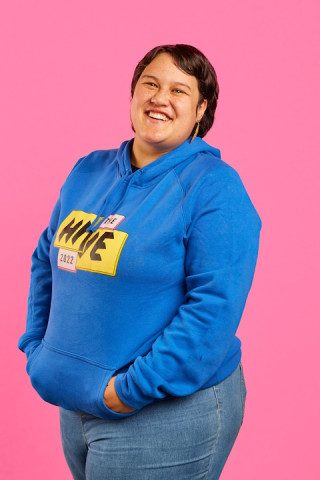Using Her Voice for the Youth Community
A Youth Plan webinar aimed at making Aotearoa ‘’the best place in the world for young people’’ has highlighted the challenges facing Pacific youth.
 Organised by the Department of Prime Minister and Cabinet (DPMC), the meeting brought together officials and representatives of youth groups from around the country.
Organised by the Department of Prime Minister and Cabinet (DPMC), the meeting brought together officials and representatives of youth groups from around the country.
The Government was looking to extend its Youth Plan which it started reviewing in mid-2022 with a mind to refresh it for the next five years, something that was needed as statistics showed that young people, aged 12-24, now made up more than 17 per cent of the New Zealand population.
The original plan focused on what it described as ‘’four priority cohorts’’ – Rangatahi Maori, Pacific young people, rainbow young people and disabled young people.
Three more groups have now been added to that list – ethnic communities (refugees and migrants), young women and regional youngsters.
Clare Ward, executive director of the Child Wellbeing and Poverty Reduction Group in the DPMC, told those present that ‘’the way in which the young sapling is nurtured determines how the tree will grow’’.
With that in mind the plan was to amplify the youth voice in Government policy and decision-making and to have those identities seen, valued and respected.
Tia Tonginako (pictured), a representative of The Hive (image credit) a group set up to give young people a platform to have two-way conversations with decision-makers about the issues that matter to them, told the meeting she wanted any policies they come up with to ‘’genuinely consider youth perspective’’.
She said while they could not possibly speak for all young people they could bring their own unique perspective to the table.
The South Auckland woman, deeply connected to the Samoan and Maori communities in the area, said one of the big issues they faced was getting people in the area to engage with politics as they had many other priorities to consider.
‘’If you are just thinking about putting food on the table or getting to school you are not thinking about joining a youth group,’’ she said.
‘’It’s not that the groups are seen as a bad thing, I love being part of them, but it’s really important to tell people that (the groups) are out there.
‘’We have to find that bridge between (ourselves) and the decision-makers ... and make a connection.’’
For more information
- Youth Plan: Voice, Leadership, Action - MYD
- Mana Taiohi - Ara Taiohi – extra information including the video
Pacific youth – youth voice is central to Pasefika Proud change activity.